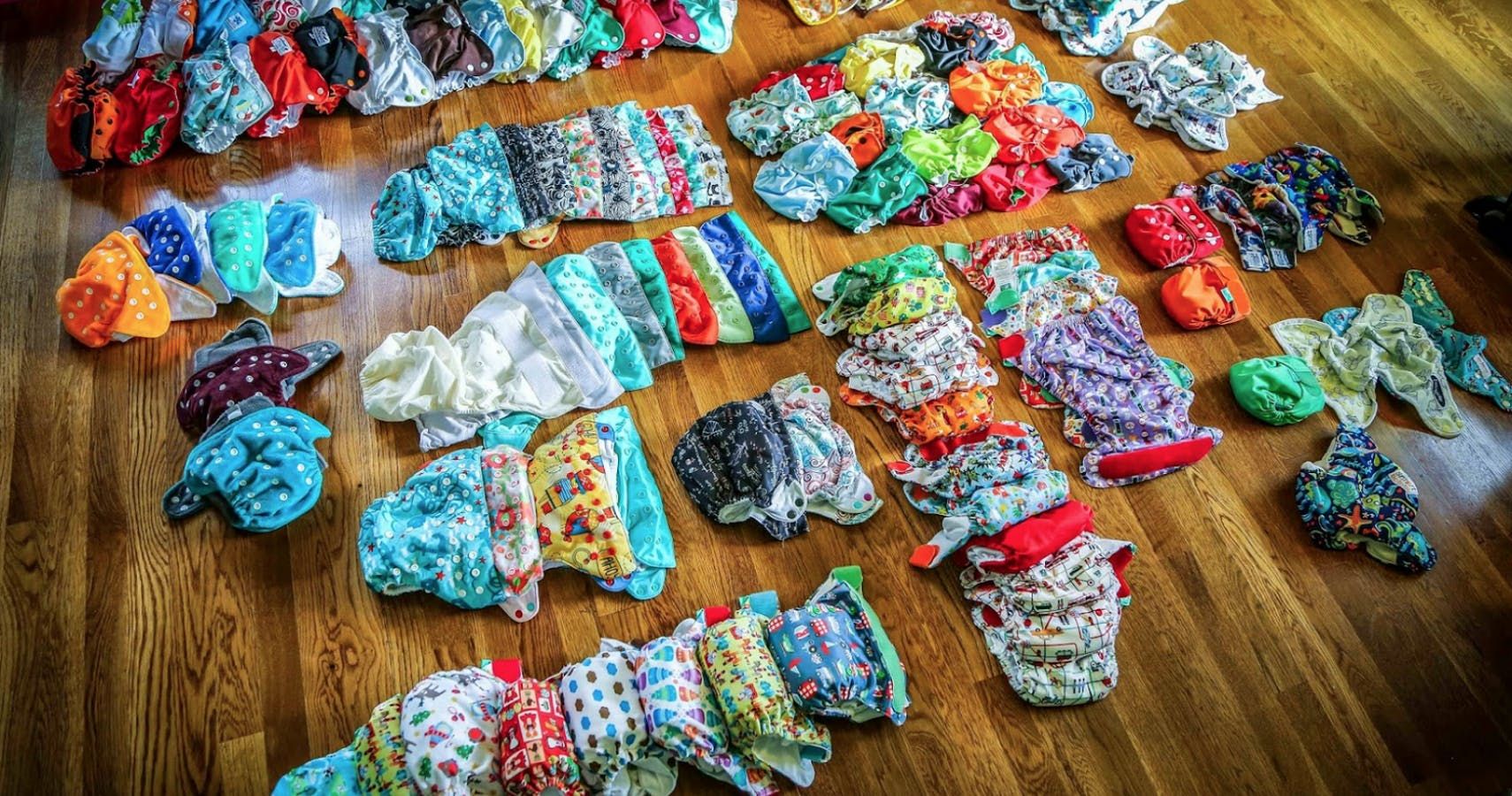Cloth diapering has come a long way (for your) baby! Loose white towels and safety pins are a thing of the past. Nowadays, parents can choose between all-in-ones, fitteds and covers, wool or fleece, pocket diapers, all-in-twos, and more! Not only is cloth diapering becoming more and more mainstreaming, it's been upgraded with the help of more current fabric technologies and washing machines. My mom used cloth diapers when my older sister was a little baby, but what she used and the way she washed them look very different from the recommended routines of today.
Like many parenting niches, cloth diapering can seem really overwhelming on its face. Where can you find cloth diapers? How do you know which ones will work for your family? Can you clean them in your laundry machine at home? Before your head starts swimming with the details, let me break it down for you!
Three Components Of Cloth
Every cloth diapering system has three different components. Absorbency, Water-resistance, and Fastening. While each type of cloth diaper varies, a complete cloth system will always include all three parts. So if a diaper is only absorbent, know that you will have to find complimenting parts to manage water-resistance and fastening. Make sense so far? Great!
Now, there are different types of cloth diapering systems. I'll note which of these systems has which components later on.
Water Resistance
Notice I keep saying water-resistant instead of waterproof? That's because you don't want to wrap your kid in plastic. It's bad for their skin and breeds bacteria which can cause nasty infections. All cloth diapers will be water-resistant, which means that eventually, if left wet, they will leak through. That takes hours upon hours in a working system!
There are a few different types of outer coverings that provide this water-resistance. Most common in modern cloth is PUL or TPU - it's sort of like a plastic that's been sealed to fabric. PUL can withstand autoclaves - machines that get so hot they sterilize anything inside - so PUL covers will be perfectly fine in a working dryer. Parents can also use lanolized wool covers or pants or even fleece. Wool is my personal favorite - it's natural, breathable, and I've never had a single leak with it! Plus, you only have to wash it once a month or so, only when it gets smelly.
Absorbency
Ok, here's the honest truth: you can spend loads of money of specialty hemp fitteds, flats, prefolds, or inserts. OR - you can use old tee-shirts. Seriously! If it absorbs, it can be used to absorb pee. It's not safe to put microfiber touching baby's skin, so microfiber towels or inserts work best in pocket-style diapers. Otherwise, it's fair game.
Microfiber inserts are cheap and trim - they often come included with pocket diapers from many different brands. Downside: microfiber releases liquid when it's compressed (like in a car seat). Flats, flour sack towels, prefolds, fitteds, or inserts can also be made of cotton cloth. Cotton absorbs quickly and doesn't release liquid when compressed. Bamboo is in-between the two; the name is a misnomer, since bamboo is actually a synthetic material. But bamboo is a great fiber - it absorbs rapidly, stays trim, and can touch baby's skin. Hemp is the holy grail of cloth diapering. It's a heavier fiber, absorbs slowly, but holds an impressive amount of liquid! Some parents find that pairing two fibers together - like microfiber with hemp - gives them the best of both worlds!
Fastening
Cloth diapers have a variety of different closure or fastening systems. Flats and prefolds are wrapped around the baby in the shape of underwear, and they're held in place by Snappis, Boingos, or yes - safety pins! All-in-one, all-in-two, pocket diapers, or fitteds fasten with either snaps or hook-and-loop (just don't call it Velcro). Wool and fleece covers are made to fit the baby's body in various shapes and sizes.
Which Systems Have Which?
All-In-Ones: Water-Resistance, Absorbency, Fastening. The most like disposable diapers.
Pocket Diapers: Water-Resistance, Fastening. Absorbency must be added to these diapers in their pocket.
All-In-Twos: Water-Resistance, Absorbency, and Fastening. Although the absorbency is removable from All-In-Two systems.
Flats or Flour Sack Towels: Absorbency only. These have to be fastened and covered with water-resistance.
Prefolds: Absorbency only. Have to be fastened or folded to use as inserts, and paired with water-resistance. These are made of several layers of fabric.
Fitteds: Absorbency, Fastening. Must be used with water resistance.
PUL or TPU covers/shells: Water-Resistance, Fastening. Must have absorbency added, typically flats, prefolds, or inserts.
Wool or Fleece: Water-Resistance, Fastening - they usually just slip on like clothes or underwear. Used over some form of absorbency.
Stay tuned for more on cloth diapering basics! Have questions on modern cloth diapering? Hit me up on Twitter @pi3sugarpi3 with #ClothDiapering101

